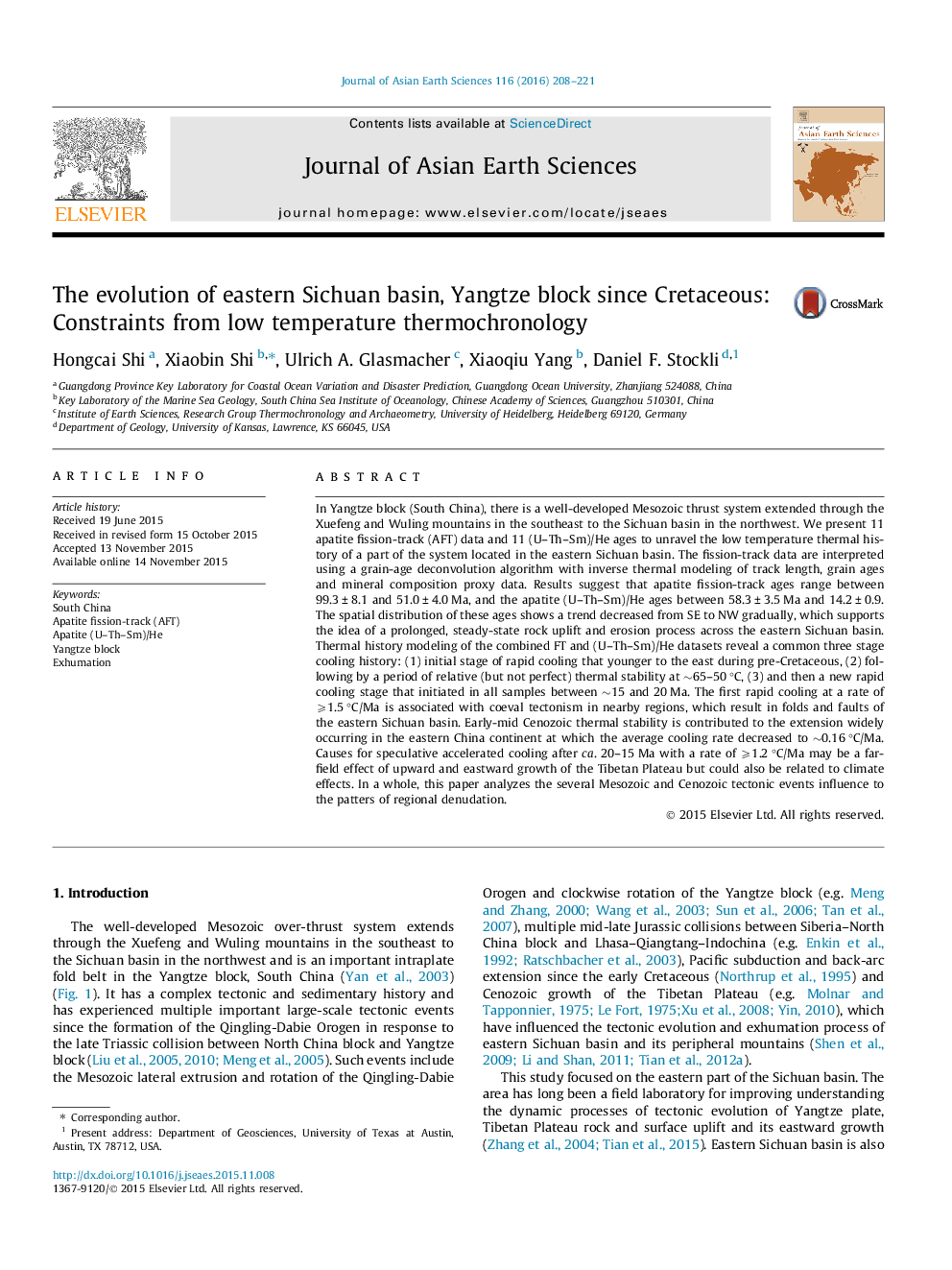| Article ID | Journal | Published Year | Pages | File Type |
|---|---|---|---|---|
| 4730265 | Journal of Asian Earth Sciences | 2016 | 14 Pages |
•AFT and (U–Th–Sm)/He data are used to elucidate evolution of eastern Sichuan basin.•Three cooling phases are constrained based on the low temperature thermochronology.•Northwestward migration of the uplift process in Cretaceous is documented.•Slow exhumation is associated with the extension occurred in eastern China continent.•Cenozoic cooling is attributed to the growth of Tibetan Plateau and climate effect.
In Yangtze block (South China), there is a well-developed Mesozoic thrust system extended through the Xuefeng and Wuling mountains in the southeast to the Sichuan basin in the northwest. We present 11 apatite fission-track (AFT) data and 11 (U–Th–Sm)/He ages to unravel the low temperature thermal history of a part of the system located in the eastern Sichuan basin. The fission-track data are interpreted using a grain-age deconvolution algorithm with inverse thermal modeling of track length, grain ages and mineral composition proxy data. Results suggest that apatite fission-track ages range between 99.3 ± 8.1 and 51.0 ± 4.0 Ma, and the apatite (U–Th–Sm)/He ages between 58.3 ± 3.5 Ma and 14.2 ± 0.9. The spatial distribution of these ages shows a trend decreased from SE to NW gradually, which supports the idea of a prolonged, steady-state rock uplift and erosion process across the eastern Sichuan basin. Thermal history modeling of the combined FT and (U–Th–Sm)/He datasets reveal a common three stage cooling history: (1) initial stage of rapid cooling that younger to the east during pre-Cretaceous, (2) following by a period of relative (but not perfect) thermal stability at ∼65–50 °C, (3) and then a new rapid cooling stage that initiated in all samples between ∼15 and 20 Ma. The first rapid cooling at a rate of ⩾1.5 °C/Ma is associated with coeval tectonism in nearby regions, which result in folds and faults of the eastern Sichuan basin. Early-mid Cenozoic thermal stability is contributed to the extension widely occurring in the eastern China continent at which the average cooling rate decreased to ∼0.16 °C/Ma. Causes for speculative accelerated cooling after ca. 20–15 Ma with a rate of ⩾1.2 °C/Ma may be a far-field effect of upward and eastward growth of the Tibetan Plateau but could also be related to climate effects. In a whole, this paper analyzes the several Mesozoic and Cenozoic tectonic events influence to the patters of regional denudation.
